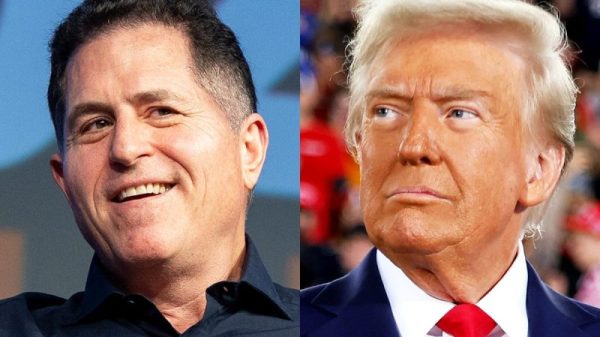Buy to close call option – how does it work the best?
Have you ever wondered what the “buy and close call option” refers to? What kind of terminology is it among experienced traders using it more often than ever? If you are into the trading business, you’d be happy to understand that “Buy to close” represents a term mostly used by options traders when they’re about to exit a present short position.
In other words, buy to close can refer to a situation in which a particular trader is eager to rule out the existing “options trade. For complete newbies, this situation is used once a trader is about to purchase an asset to counteract or close that asset’s present position.
But what is the main definition of the Buy to close call option, and how can we best describe it? According to experts, what is the main “know-how” for this frequently used activity by numerous traders worldwide? Let’s dive deeper into this topic, shall we?
Understanding the buy-to-close call option better
Buy to Close is a strategy that options traders frequently use in the stock market for exiting exclusively short positions. Once traders write an option for which they have managed to get a net credit, they expect to end an open position.
Besides that, this strategy is perfect for those eager to buy an asset to equalize and terminate the same asset’s short position, i.e., to try closing a position. Most day traders and investors use the buy-to-close strategy to exit open positions once they receive the short’s option position.
It’s crucial to understand that, in this situation, the number of accessible option contracts in the stock market, among other financial markets, is decreased. A trader or investor is able to observe this strategy as a special offsetting trade kind that encloses short positions.
Therefore, traders and investors are able to get rid of the probability of expected price growth.
What is the best example of a buy-to-close option?
Let’s see one useful example of this option. Assume we have a day trader Alex who initiates an opening position by writing put options on Amacon Ltd. stock, valued at $100 per share. He then anticipated a rise or steady value in the stock price and employed a neutral to bullish strategy by selling each option contract.
Similarly, another day trader Michael sold options, expecting a decrease in implied volatility. The one-month expiration puts, with a $100 strike, generated an $8 credit. On the option’s expiration day, the stock remained unchanged at $102, reaching the same level as a month ago.
Even though the delivery was imminent, with the strike price slightly lower than the stock price, the put contract’s value dropped significantly. Consequently, the trader made a profit by buying it for approximately $2, initially resulting in a $6 profit from selling the option for $8.
In summary, the trader opened the option at $8, and trader Michael purchased it near $2, yielding a $6 profit.
What is crucial to note in options trading?
Once you’re into options trading, fully understanding the concepts of buy-to-close and buy-to-cover is crucial. Both are vital in numerous options strategies, including investing in options. For those who’ve just entered the world of trading, options are financial instruments that enable the exclusive right to buy or sell a certain asset at a predetermined price in a determined time frame.
When a certain investor starts with the options trading business, they may have an open position where they initially sold an option. They can utilize a buy-to-close order if they’re eager to exit this position. This particular order is helpful because it enables them to offset their obligation to buy or sell the underlying asset associated with the option.
When an investor writes a call option, they are able to purchase it back to close their position and end their obligation to purchase no less than 100 shares of the underlying asset at a specific price. In buy-to-cover scenarios, investors usually focus on stocks instead of options. They borrow stocks to sell them and aim to repurchase them at a lower price for profits.
What do “buy-to-cover” orders enable investors?
The buy-to-cover order allows them to return the borrowed shares. Note that stocks are only able to be repurchased if they’re available in the market. It is unlike options that have expiration dates.
What does options trading involve?
Options trading involves important terms, which are the following:
The strike price (predetermined buying/selling price)
Expiration date (deadline for option exercise)
Market prices (determining costs and potential gains/losses).
Typically, strategies such as long call/put involve buying options to benefit from asset price movements, while selling call options/short put involves writing options to generate income and limit risk.
The iron condor is an extremely popular strategy combining long and short options positions to profit from a range-bound market.
What are the main differences between Buy to close and sell to close?
Buy to close is:
Referring to the orders that permit a day trader to repurchase an asset previously sold short. Sell to Terminate signifies day traders’ attempt to exit the long position of the option.
Eliminating any susceptibility of the asset to market fluctuations. It offers the intended level of involvement with the asset.
Regarded as the corresponding action to sell to initiate.
On the other hand, sell to close is:
Providing the desired exposure to the underlying asset.
Represents a corresponding action to “Buy to Open.”
Closing long option trades is commonly known as “Sell to Close.”
Bringing an end to all rights associated with options contracts.
Typically, it involves purchasing an option contract to open a position.
Bottom Line
All those ambitious traders and investors in buy-to-close and buy-to-cover orders should understand how crucial they are in managing options positions and achieving desired outcomes in trading. To succeed in options trading, understanding buy-to-close and buy-to-cover orders is vital.
These orders assist in managing positions and achieving desired outcomes. Consider long put options for profiting from downward price movements, evaluate the premium paid, and assess potential losses. Awareness of short-selling risks enhances decision-making. Incorporating these strategies and concepts maximizes investment outcomes.
The post Buy to close call option – how does it work? appeared first on FinanceBrokerage.






































